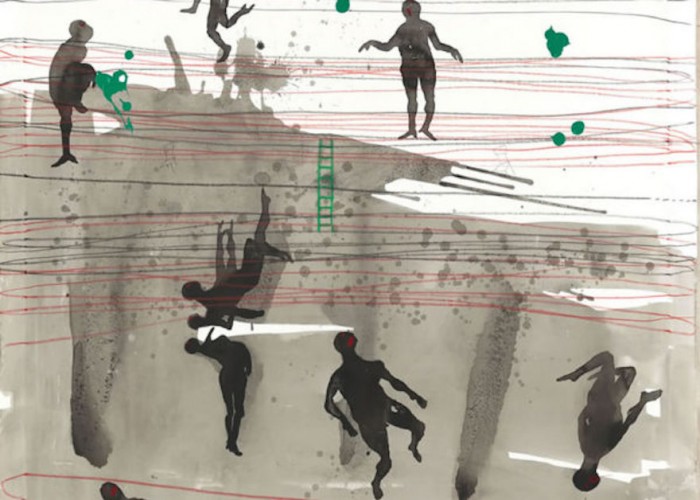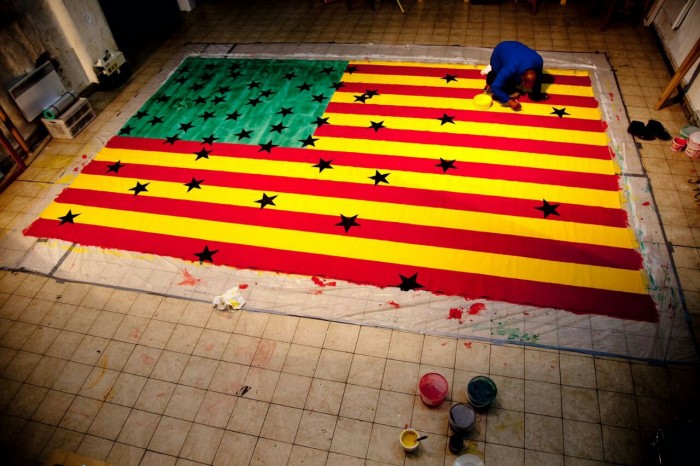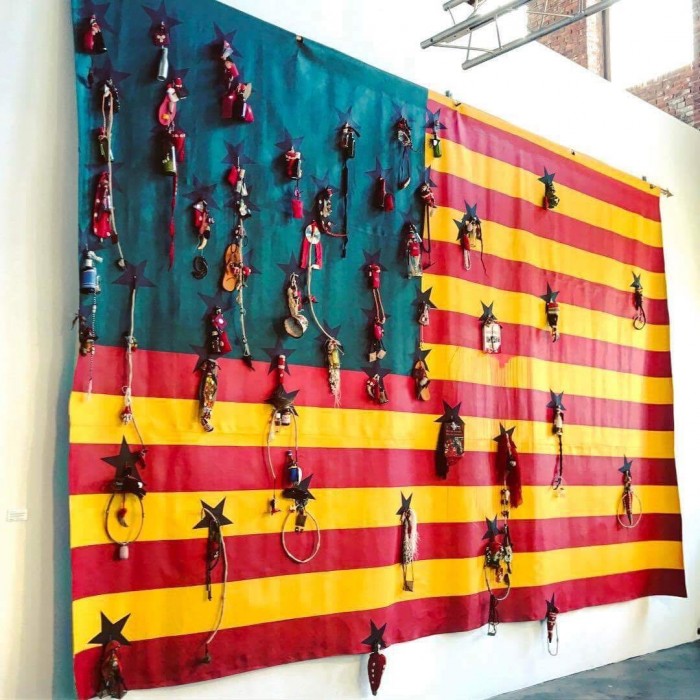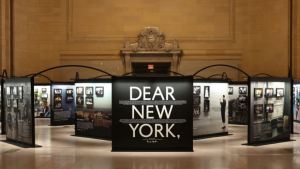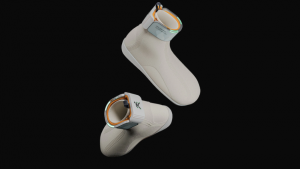Nu Barreto is an artist, born in Guinea Bissau, who uses his artistic expression to challenge age-old traditions.
Take Finguli for example. Funguli is a tradition in Guinea Bissau that separates people into different social classes according to the ashiness of their skin. This means that dark skinned people, who sometimes have dry or ashy skin, are seen to be of a lower class than lighter skinned people in the West African country.
He began applying the ashy Funguli colour into his drawings as a way of subverting the negative connotation and instead celebrating it. “Using Funguli colour, I decided to emphasise the profound pain of my native society that affects the children and elderly. My drawings and paintings are the representation of the evils in society that l modestly try to fight against.”
Now based in Paris, Barreto says that his West African roots influence his work greatly. Guinea-Bissau, which celebrated its independence recently, used to be part of the Portuguese Empire and was once known as the Slave Coast. it is one of the poorest countries in the world and relies mostly on foreign aid.
The flag for his homeland is also a major feature in his work. He uses it as a backdrop for his artistic expression often pinning other objects onto it to make striking visual art that pleases the eye as much as it draws attention to the injustices in Guinea-Bissau.
Sitor Senghor, a curator of contemporary African art, had this to say about Barreto's work, “His work displayed in New York was overwhelming. Not only in terms of size (even though it was by far the largest piece exhibited) but also by the strong power of identification for the American crowd.”
He believes that it is everyone's role, including artists, to help draw attention to injustice. "The world is full of social injustice and its lack of respect for human rights. Design should be used as a tool to improve lives and harmonise situations.”
Barreto is currently working on his next exhibition, Clourblind, which will take place in Munich next month.

